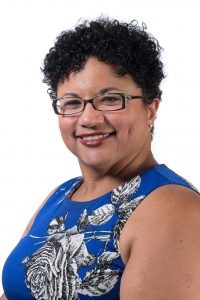
Growing up, I was certain I would never be an educator. I dreamed of being a lawyer, FBI agent, world traveler – anything but a teacher. But, as destiny would have it, I have spent more than 20 years in the field of education, with the bulk of this time focused on the education of American Indian and Alaska Native children with special educational needs, and those who lead and teach them. And, I can’t think of anything I would rather do. Not only is this my work, it’s my passion.
My pathway into teaching, and ultimately into a faculty position in a college or university, was made possible by fellowships from the American Indian Special Education Teacher Training Program and the America Indian Leadership Program (AILP) at Penn State. Both of these programs were funded by personnel preparation grants from the U.S. Department of Education (USDOE) and the Office of Special Education Programs. Through these, and other related initiatives, the AILP graduated more than 180 American Indian and Alaska Native master’s and doctoral degree seeking students between the early 1970s and 2014, many of whom have gone on to make important contributions to the field of education as well as to their communities and tribes.
Although the AILP is no longer in operation, similar programs, focusing on the recruitment, retention, and graduation of American Indian and Alaska Native teachers and school leaders, are funded across the nation by the Office of Indian Education within the USDOE. Current programs include:
Aaniiih Nakoda Teacher Preparation Project, Montana
Fort Peck Community College Indian Education Professional Development Project, Montana
Stone Child College, Montana
Sapsik’walá (Teacher) Education Project, Oregon
The Indigenous Teacher Education Project (ITEP), Arizona
The Native American Excellence in Education – Teacher Preparation Project, Oklahoma
The Nandagikenjiganashk Project, Wisconsin
Indigenous Alaska Scholars Project, Alaska
Indigenous STEM in Teacher Education (I-STEM), Salish Kootenai College, Montana
Oglala Lakota College, South Dakota
The Electa Quinney Institute Teacher Training and Administrative Leadership-STEM Focus program, Wisconsin
Indigenous Knowledge for Effective Education Program (IKEEP), Idaho, Washington, and Oregon
Aspiring Native Educators: Espa͞ehkawak akekoh Mamāceqtawak Ka͞ehkenohamowekowak (“They rise up, those Indian Teachers”), Wisconsin
The Blackfeet Community College Indian Education Professional Development Program Indian Centered Education Project (ICEP), Montana
Teach 2 Reach (T2R), Oklahoma
First Americans’ Educational Leadership Project, North Carolina
University of Mary, North Dakota,
Lakota Education Action Plan (LEAP), North Dakota
Native American Early Childhood Education Scholars Program, Massachusetts
Successfully melding Indigenous Knowledges and Ways of Knowing with research-based practices in teacher/leader preparation, these programs serve as shining examples of the power and possibility of education to transform not only the lives of those who we teach but those who teach.
The training, experiences, and support provided by the American Indian Leadership Program allowed me to envision myself as an educator and to work to fulfill the dreams of my elders – improving the educational conditions and subsequent life outcomes of Indigenous children and youth. If we are ever to fully achieve this dream, it is paramount that Indigenous children and youth see, and experience the presence of, Indigenous teachers and leaders within their schools. For this to happen, colleges and universities must continue to grapple with what it means to move beyond traditional western ways of recruiting, retaining, and preparing future educators and school leaders. This requires meaningfully engaging with, and learning from, tribal communities and their members.
An enrolled member of the Coharie Tribe, Susan C. Faircloth, Ph.D., is professor and director of the School of Education at Colorado State University.
